‘Mystery’ was initially published in The Deccan Herald, one of Karnataka's leading dailies. A few years later, it became part of my book Dolphin Girl and Other Stories published by Har Anand, New Delhi. It was rewritten for BBC Radio 4 in 2004 in a programme called Opening Lines for writers new to radio.

Writing for Radio
by Sarandipity
Writing or rather re-writing my short story for BBC Radio was a great experience. The enthralling setting and history of Hampi inspired me to write 'City of Victory'.
Historical Fiction Inspired by the Setting and History of Vijayanagar (Hampi)
It is said that one visit to the ruins of Hampi the erstwhile Vijayanagar which translates as City of Victory is just not enough. The surreal rock-strewn landscape seems to sprout temples and the ruins bear an air of mystery. This once powerful city of victory was praised by the historians, Nuniz and Paes as greater than Rome, with palaces plated with jeweled gold, the best provided city in the world.
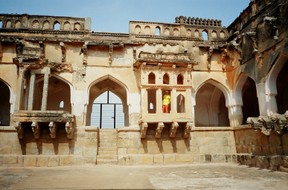
At first sight Hampi looks like a giant play pen. Twenty six square km of barren, desolate land pierced by mammoth boulders in jagged and gentle shapes, scattered haphazardly over the stark landscape. Hampi is laced by the Tungabhadra River on the banks of which it is said, the Goddess Hampi (Parvati) attained Shiva.
In the 13th century, the markets of Hampi overflowed with the richness of silks, diamonds, rubies and emeralds as large as nuggets. Courtesans adorned with seed pearls and anklets and girdles of gold glided by in ornate palanquins.
Today, the Market Place with its ancient, roofless stalls is a riot of colour and aromas on festive nights, when the towering Virupaksha Temple is aglow with lamps.
The graceful Lotus Mahal in the womens' enclosure (Zenana) was inspired by the beauty of woman. Yonder lies the crumbling watch tower, once guarded by eunuchs. From here, royal maidens watched the festivity of the land. Nearby are the sturdy guardhouse and the domed elephant stables.
From the platform of the Mahanavami Dibba, royalty viewed Hampi astir with pomp and revelry during the nine bejeweled nights of Dussehra.
The great Queen's Bath is open to the sky, surrounded by a moat. Lotus -headed fountains once poured perfumed water into its pool and from its overhanging filigreed balconies, ladies of the court watched the fun and frolic of the bath.
Over it all reigns the 6-metre tall Lakshmi Narasimha. With great bulging eyes, he rests beneath the hood of the seven-headed cobra. On his thigh are the remnants of his consort, Goddess Lakshmi and upon the pedestal on which he sits, the carved moon and stars say that the city would last as long as they did.. Moslem hordes ransacked the city after just 300 years of glory
A Story Inspired by the History and Customs of Vijayanagar
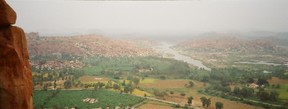
The fact that historians Nuniz and Paes referred to the Vijayanagar empire as greater than Rome and Vijayanagar as the best provided city in the world was the major inspiration for Mystery.
When I first visited the ruins of Vijayanagar in the 1980s, I was struck by its mysterious ambiance. The watchtowers in the royal womens' enclosure unleashed in me visions of trapped princesses gazing out longingly at the surreal rocky landscape; the Queens Bath was filled with scented water and the sounds of laughter.
I did some research and was fascinated by accounts of the Dusshehra Festival celebrated in Vijayanagar and these crept into my story, 'City of Victory' which had earlier been published as 'Mystery' in the state daily and in the collection of my short stories titled 'Dolphin Girl and Other Stories.'
The only historically correct characters in the story are King Krishna Deva Raya, in whose reign the empire reached the zenith of its glory, and his favourite Queen, Nagala Devi, once a courtesan of high birth, who bore him a son. She had been gifted to him when he was a child to teach him the arts of social etiquette.
It is known that the Kings female attendants were foreigners, and many women of
foreign birth were part of his harem. So it should not surprise that the Egyptian gypsy Jehaan is part of the zenana of the King.
For more than 200 years, this incredibly wealthy city where diamonds and emeralds were
freely sold in the marketplace, dominated the economic life of southern India.
When Krishna Deva Raya died in about 1532, sati on an enormous scale ensued. His wives and concubines were burnt upon his funeral pyre.
The reign of his successor, Achutya Raya did not last long. He lived away from the palace in a temple in the valley that lies between the two major temples, the Virupaksha and the Vittala. Much of his time was spent in the zenana. An inept ruler, he could not conduct a commercial em
When, in the fatalistic battle at Talikota with the Moslem armies, Achutya Rayas uncle was killed, the armies of Vijayanagar dissolved and all chaos broke loose. The royal family divided itself into two groups, ransacked the treasury, and abandoned the city. When the Moslems came in, they stayed in the deserted city for three months, dismantling monuments and destroying whatever they could. The two groups then returned and attempted to take over Vijayanagar, in the process, laying it to further ruin. Their avaricious feud was to last a hundred years till the coming of the British Empire that hinged on world trade. His reign was more extravagant than his predecessors, but lacked artistic integrity. The hard, dark core of carnality and sati broke through at last, destroying it all.
In the end came the wild tribes from the nearby jungles to claim whatever was left.
Much of this history I was to discover only later when I began the process of expanding this short story into a novella, guided by my Muse, the late Gordon Hindley, an expert on Hampi. You can listen to the BBC broadcast of the short story narrated beautifully by Badria Timimi.
The Character of the Protagonist
Writers do put in something of themselves in the characters they create and so did I with the rebellious Jahan. Only a gypsy would see the opulence, pomp and culture of Vijayanagar with fresh eyes. Gypsies, I surmised would tend to feel stifled by opulence and having to live in the womens' enclosure. Of course, being just about 17 years old, she would be
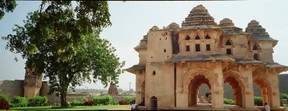
romantically inclined. She would search for the unattainable because in actuality, she wanted to be free from bonds. Her magic would certainly feature in the story and as you can see, she created the stranger with the green eyes through her intense yearning to get away.
 | Hampi: Discover the Splendours of Vijayanagar The ruins at Hampi are the remains of the medieval kingdom - the magnificent Vijayanagar:the City of Victory - a metropolis of busy bazaars, luxurious palaces and fabulous temples. |
 | Hampi: 99 Tips For Tourists & Backpackers Hampi, one of the treasures of India unknown to far too many. This guide will take you through the stunning temples, and other historical sites of Hampi. |
 | BrownBeat Photo Companion to Hampi The BrownBeat Photo Companion to Hampi provides almost 90 stunning photos of the abandoned magical city of Hampi in Southern India. This eBook takes you on a visual journey of t... |
You might also like
How to earn money with writing fairy tales for kids?Can you earn a living with fairy tales writing? I know I can and I am sharing...
Images and CopyrightIt is your responsibility to make sure that you have the rights to the images...
The Inner BattleThis is a dream analysis inspired by the format for Irma's Injection from Sig...
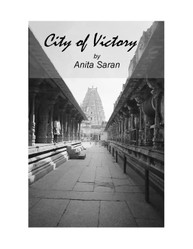


 Sales Letter for Camparion 10/14/2015
Sales Letter for Camparion 10/14/2015
 Increasing Hotel Traffic Via Direct Mailon 09/08/2015
Increasing Hotel Traffic Via Direct Mailon 09/08/2015
 6 Tips For Surviving the Coming Global Cataclysmon 08/11/2015
6 Tips For Surviving the Coming Global Cataclysmon 08/11/2015
 Advertising:What Makes a Successful Creative Team?on 05/04/2015
Advertising:What Makes a Successful Creative Team?on 05/04/2015

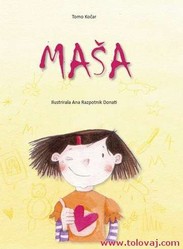

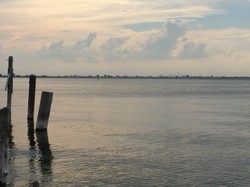
Comments
Nice read!